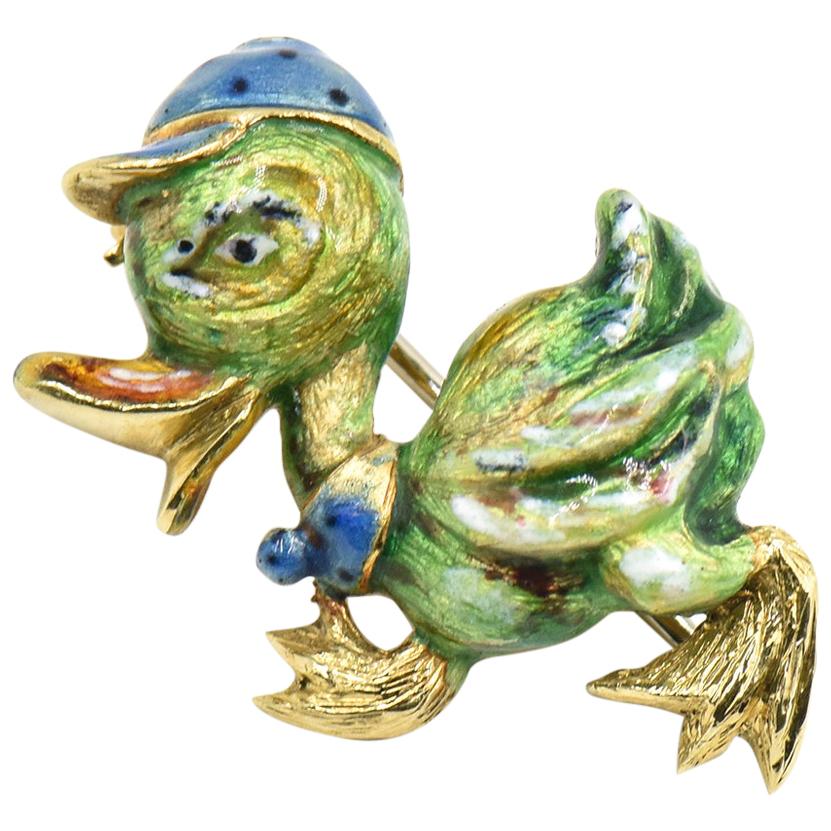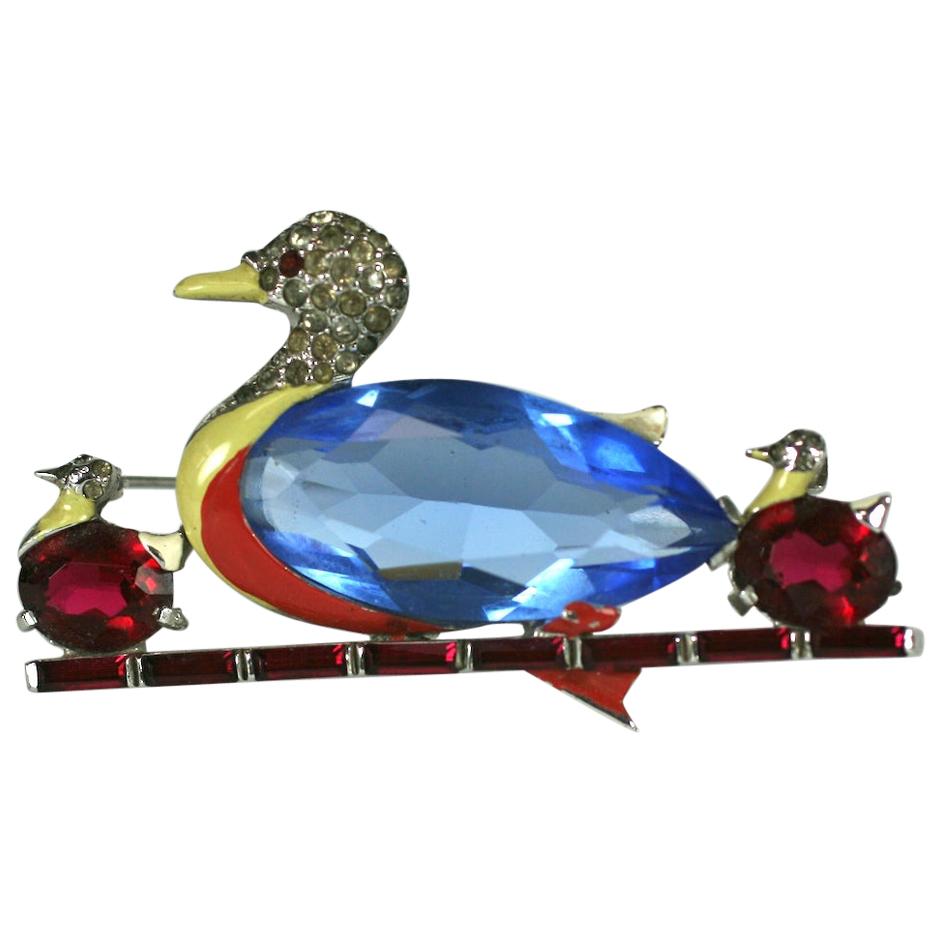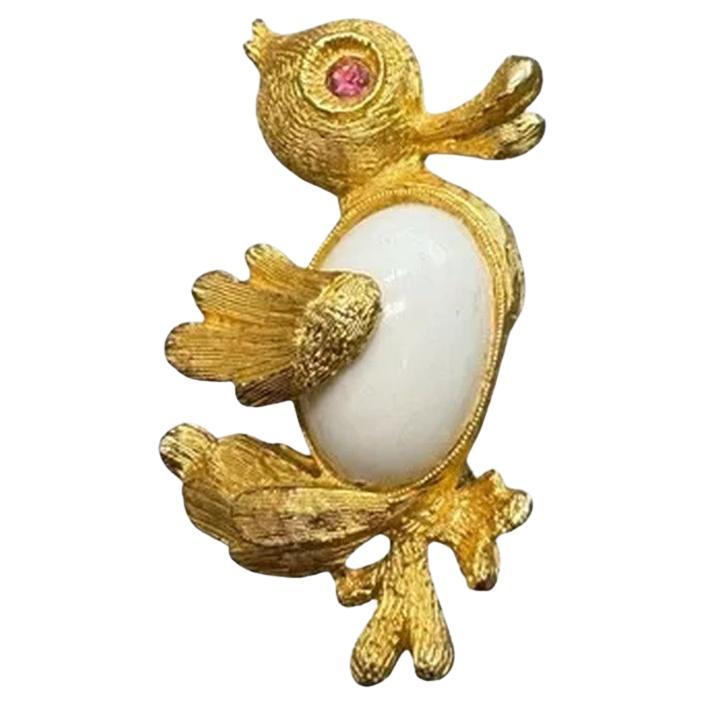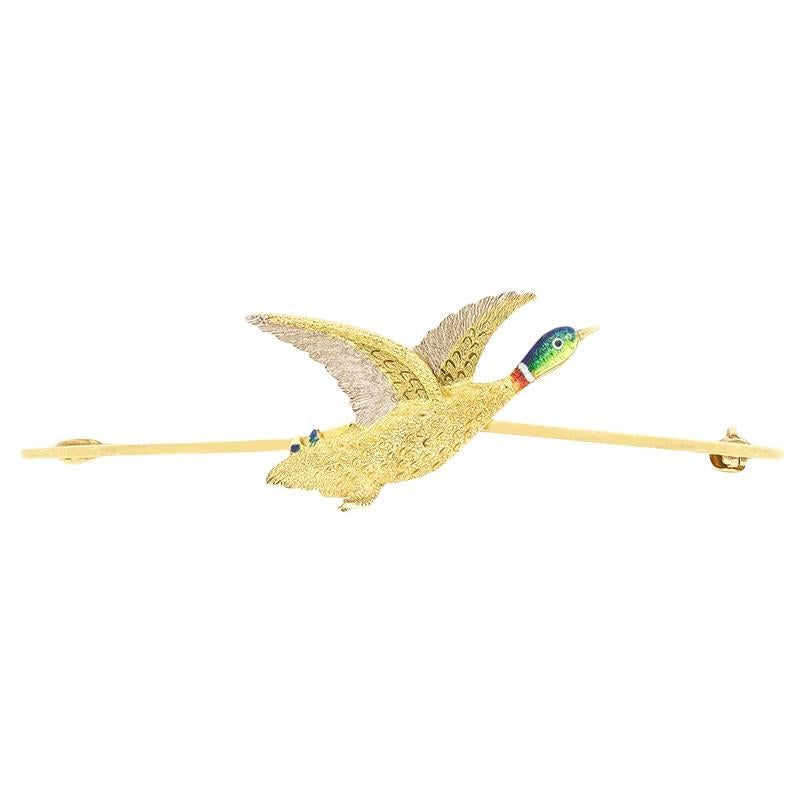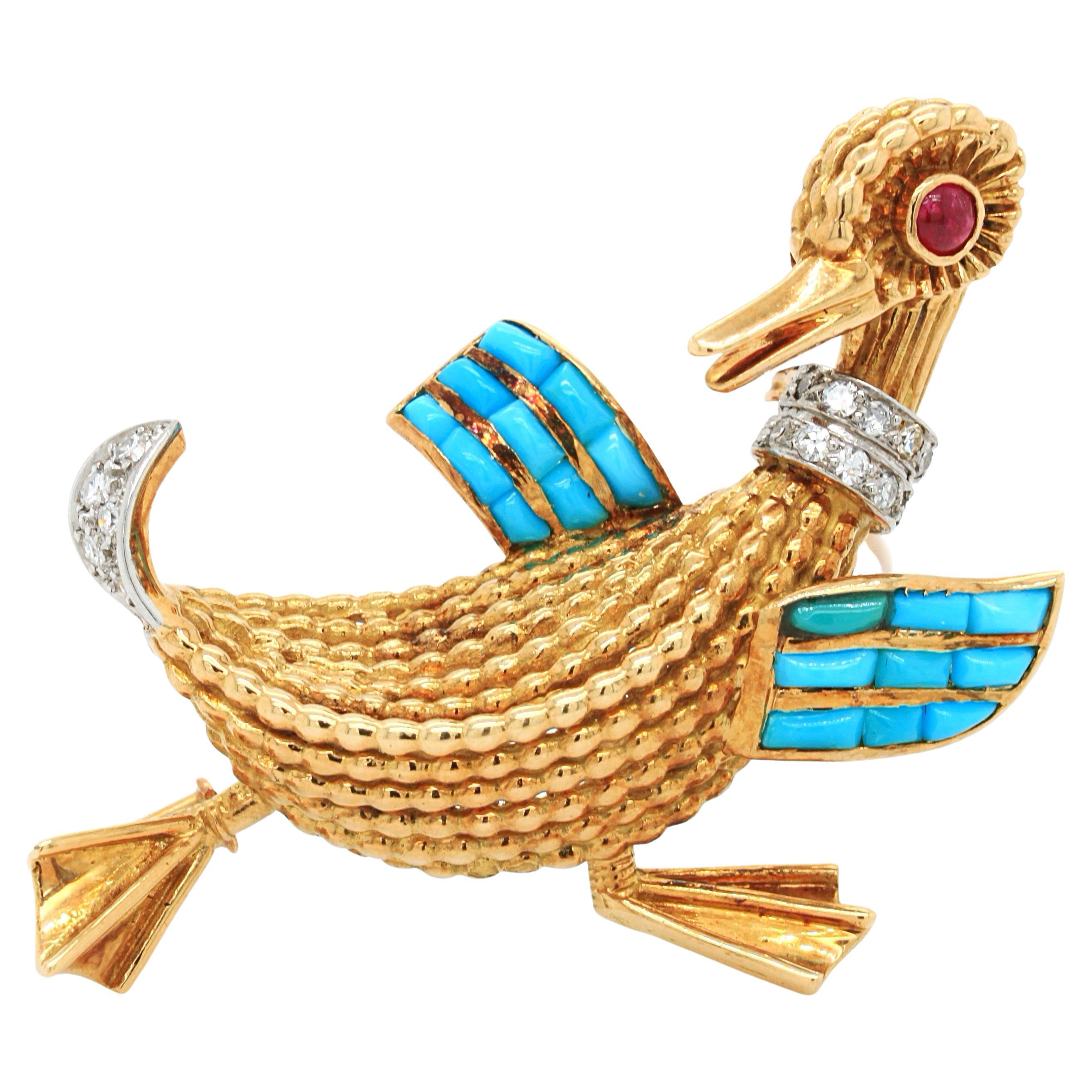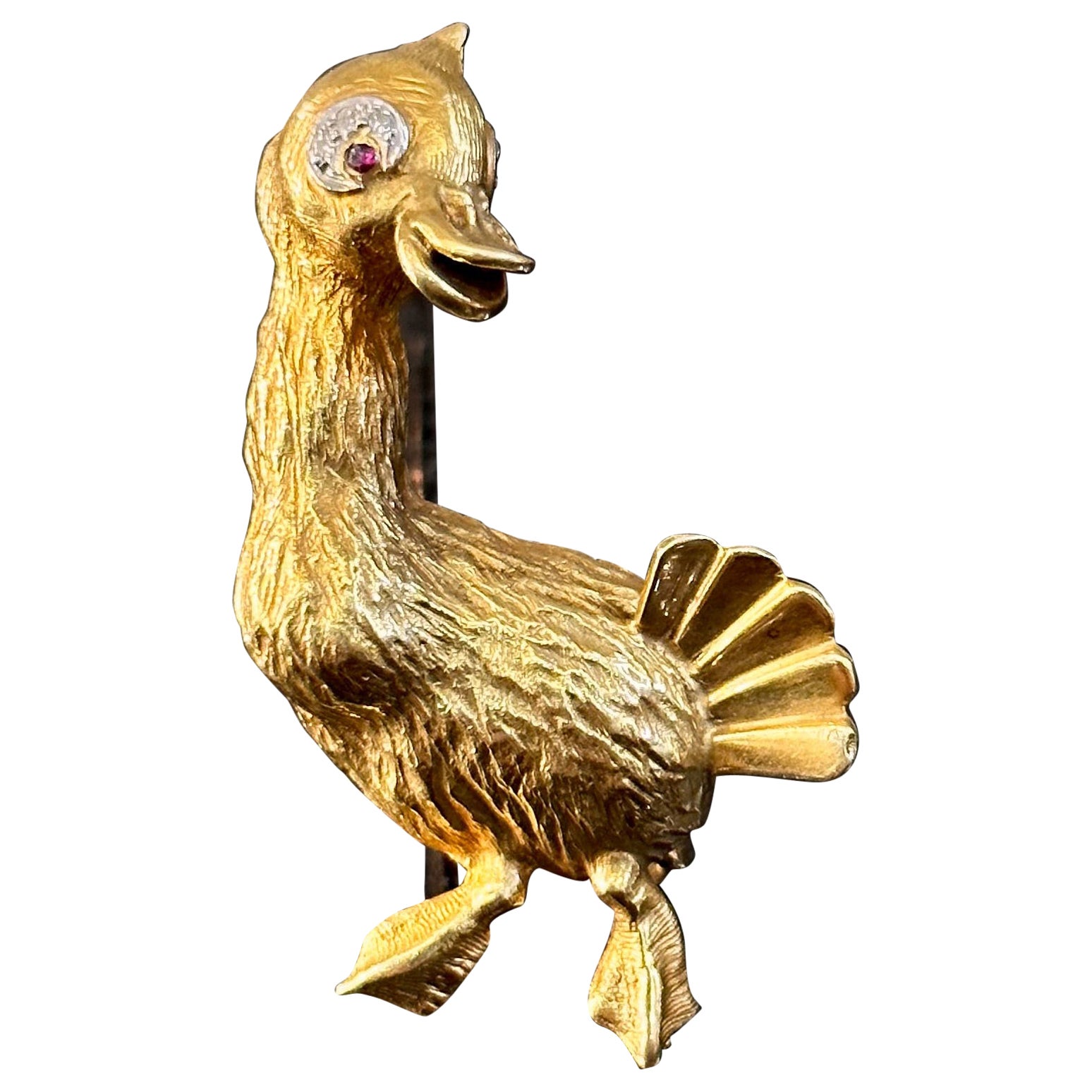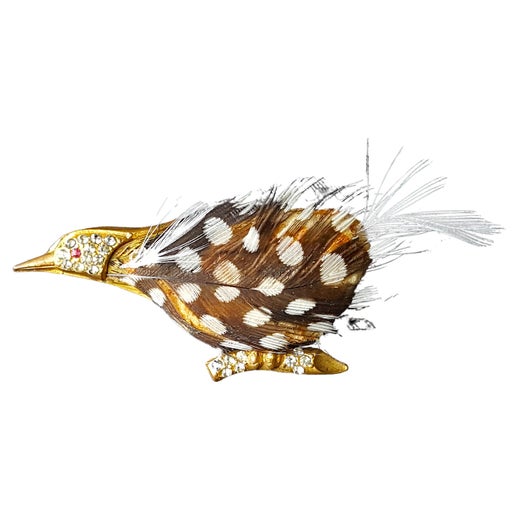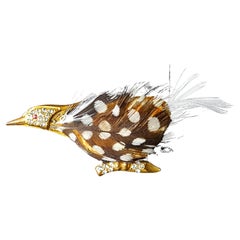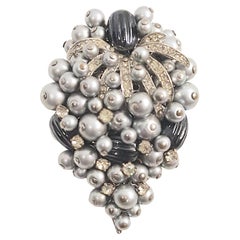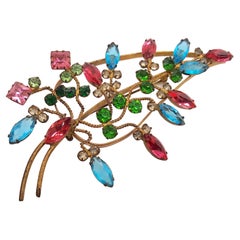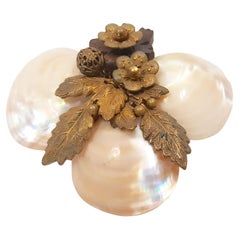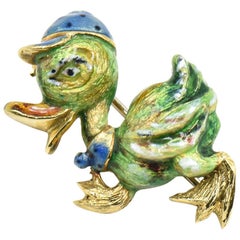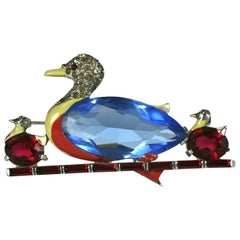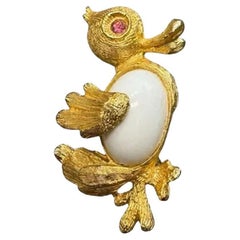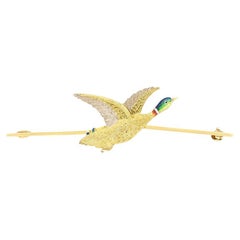Couture 1937-40 ElsaSchiaparelli MarcelVertes HarlequinDuck GlazedCeramic Brooch
About the Item
- Creator:
- Metal:Gold,Yellow Gold,Gilt Metal
- Weight:10 g
- Dimensions:Width: 1.5 in (38.1 mm)Depth: 0.5 in (12.7 mm)Length: 2.5 in (63.5 mm)
- Style:Artisan
- Place of Origin:France
- Period:1930-1939
- Date of Manufacture:1937-1940
- Condition:Wear consistent with age and use.
- Seller Location:Chicago, IL
- Reference Number:1stDibs: LU3244222890572
Elsa Schiaparelli
From her signature color Shocking Pink to her collaborations with Surrealist artists, the boldly original Elsa Schiaparelli transformed fashion with her haute couture house from the late 1920s to the early ’50s. Experimenting with elements like trompe l’oeil images and colorful visible zippers, the Italian designer instilled a provocative avant-garde artistry in her clothing and accessories, including those created with Salvador Dalí, such as the lobster dress and a hat shaped like a shoe.
Born in Rome, Schiaparelli was a rebellious child who grew up among the city’s intellectual elite. She had a voracious appetite for reading and became interested in ancient cultures, astronomy and world religions. Schiaparelli studied philosophy at the University of Rome, and after publishing a collection of poems on love and sensuality that so mortified her conservative parents that they tried, unsuccessfully, to confine her to a Swiss convent, she left for London.
A quick marriage to Count Wilhelm de Wendt de Kerlor brought her to New York, but it would be in Paris following her divorce that Schiaparelli embraced her artistic passions. She moved to the French capital city in 1922 with her young daughter and happened to meet master couturier Paul Poiret, who loaned the stylish Schiaparelli his clothes, sparking her own fashion interests.
Schiaparelli opened her modest atelier in Paris and debuted her first collection of knitwear in 1927, and later that year, she designed a black-and-white pullover hand-knit wool sweater featuring a trompe l’oeil bowknot that captured the attention of the fashion world. Vogue called it “an artistic masterpiece.” The success led to her moving her house to 21 Place Vendôme in 1935 where thousands of garments were produced each year.
Schiaparelli’s knitwear collections were later accompanied by revolutionary swimsuits and other clothing and accessories. Her inventive designs would include culottes — a radical statement in the 1930s when women still could cause a scandal by wearing pants — as well as printed fabric, such as the 1938 Tears dress with a print designed by Dalí making it appear as if the evening gown had been savagely ripped.
Schiaparelli was among the first designers to use materials like rayon and Lurex as well as explore wrap dresses and transparent raincoats. She also introduced unisex fragrances and brought her artistic partnerships into jewelry, such as bronze brooches made with Alberto Giacometti and fur-lined bracelets with Méret Oppenheim. As she wrote in her 1954 autobiography Shocking Life, women should “dare to be different.”
Despite her acclaim, her shop closed in 1954 after a tumultuous time during World War II. By then, fashion had moved on with Christian Dior's New Look, and the closure of Schiaparelli's business coincided with a comeback mounted by Coco Chanel, her archrival in the early days.
In 2006, Italian businessman Diego Della Valle acquired the brand and its archives, and the Maison Schiaparelli was reopened in 2012, back at 21 Place Vendôme where Schiaparelli's fearless and enduring work began.
Find vintage Elsa Schiaparelli hats, evening dresses and other clothing and accessories on 1stDibs.
- ShippingRetrieving quote...Shipping from: North Adams, MA
- Return Policy
More From This Seller
View AllVintage 1930s French Artisan Brooches
Crystal, Gold, Yellow Gold, Gilt Metal
Vintage 1940s American Brooches
Crystal, Pearl, Silver, Rhodium
Vintage 1930s American Artist Brooches
Crystal, Brass, Yellow Gold, Gilt Metal
Vintage 1930s American Baroque Revival Brooches
Gold, Base Metal, Brass, Gilt Metal
Early 20th Century American Art Nouveau Brooches
Sterling Silver, Copper
Vintage 1920s French Art Deco Brooches
Brass
You May Also Like
Late 20th Century Italian Brooches
18k Gold, Enamel
Vintage 1930s American Art Deco Brooches
Rhodium
Mid-20th Century American Modernist Brooches
Gold Plate
Vintage 1910s British Edwardian Brooches
18k Gold, Yellow Gold, 15k Gold, White Gold, Enamel
Mid-20th Century French Retro Brooches
Diamond, Ruby, Turquoise, 18k Gold
Vintage 1960s British Modern Brooches
Diamond, Ruby, 18k Gold, White Gold, Yellow Gold
Read More
You Saw It at the Met Ball. Here’s What Camp Fashion Is Really About
This year's Costume Institute exhibition is all about embracing the eccentric.
The Met’s Latest Blockbuster Tells a Powerful Story through 230 Jewels
A captivating show at the Manhattan museum explores how jewelry has ornamented the body through the millennia — and redefines it as high art.
